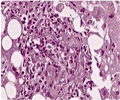Bats or other cave dwelling animals may have been responsible for the deadly 1998–2000 outbreak of Marburg hemorrhagic fever among gold miners in the Democratic Republic of the Congo…
Bats or other cave dwelling animals may have been responsible for the deadly 1998–2000 outbreak of Marburg hemorrhagic fever among gold miners in the Democratic Republic of the Congo, according to an article in the current issue of The New England Journal of Medicine.
Daniel G. Bausch, associate professor of Tropical Medicine at Tulane University School of Public Health and Tropical Medicine and an international team of researchers identified multiple genetic variants of the virus in the outbreak, meaning the fever may have been spread directly to humans by the host animals.Marburg hemorrhagic fever, a severe filovirus-caused disease related to Ebola, was first identified in European research facilities in 1967 after outbreaks traced to infected monkeys imported from Uganda. Only a few sporadic cases were reported until the 1998–2000 outbreak in the Democratic Republic of the Congo.
The team recorded a fatality rate of 83 percent for that outbreak. Young male miners comprised 52 percent of the cases, suggesting that exposure in underground mines was a factor in the spread of the disease. The discovery of multiple different genetic variants of the virus indicates that the two-year outbreak was fueled by repeated new introductions of the virus into humans from the primary reservoir, rather than simply a single introduction followed by person-to-person spread.
Bausch’s study enhances our understanding of Marburg virus, which the Centers for Disease Control and Prevention list as a “select agent” that may potentially be used in bioterrorism. There is currently no approved treatment or vaccine for the disease.
Source-Newswise
SRM









